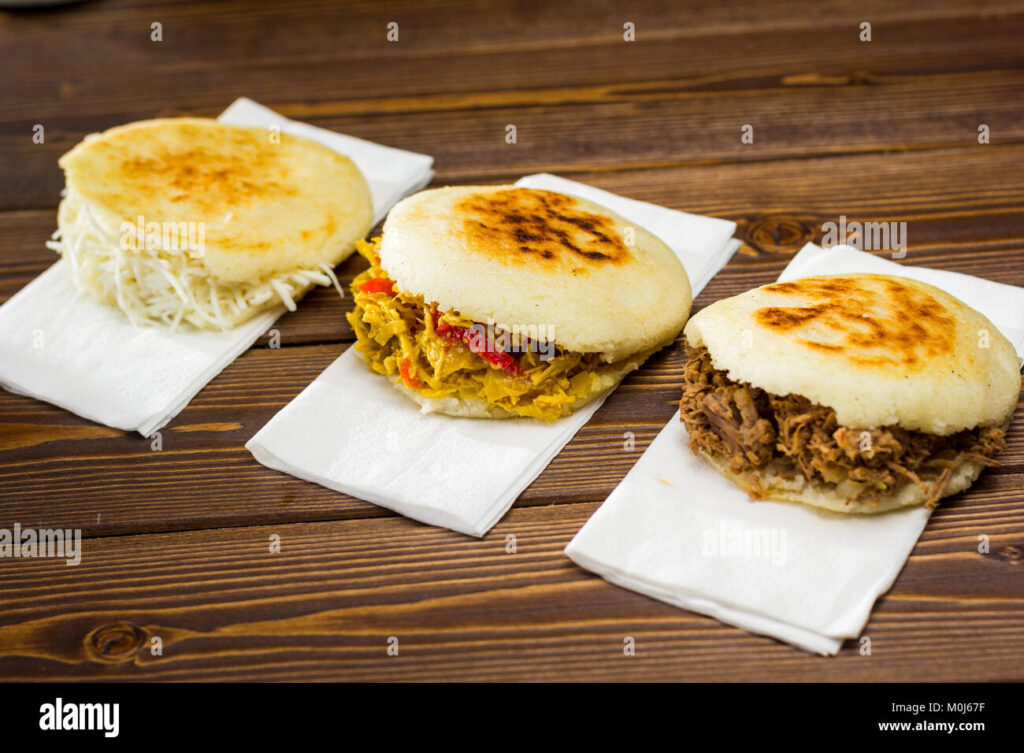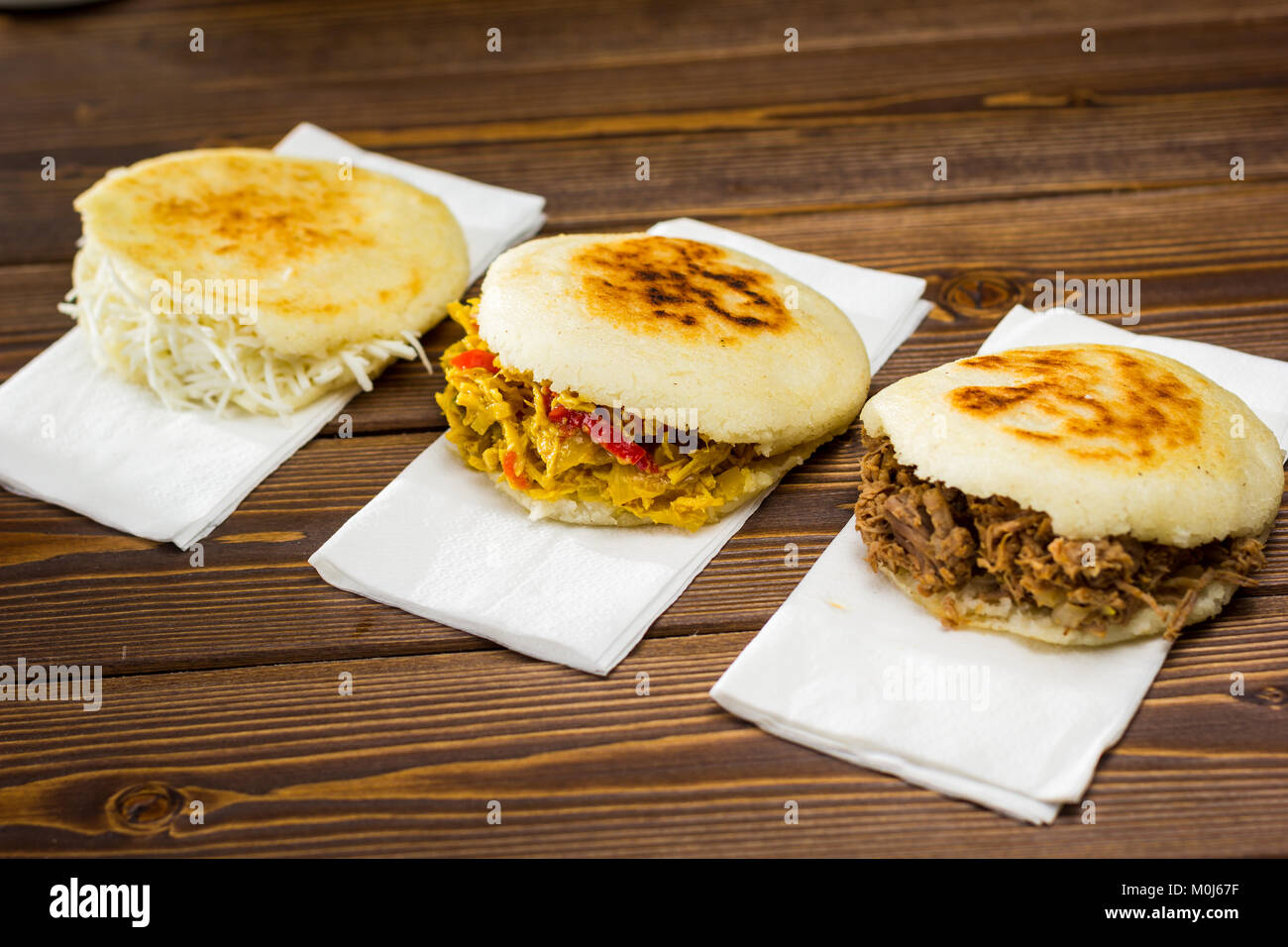
A Culinary Journey: Exploring the Rich Flavors of Venezuelan Food
Venezuelan food is a vibrant tapestry of flavors, a culinary reflection of the country’s rich history, diverse culture, and abundant natural resources. From the bustling streets of Caracas to the serene landscapes of the Andes, the cuisine of Venezuela tells a story of indigenous traditions, European influences, and African heritage. This article delves into the heart of Venezuelan gastronomy, exploring its iconic dishes, unique ingredients, and the cultural significance behind each flavorful bite. Prepare to embark on a journey that will tantalize your taste buds and deepen your appreciation for the culinary treasures of Venezuela.
Unveiling the Essence of Venezuelan Cuisine
Venezuelan cuisine is more than just a collection of recipes; it’s a cultural expression that embodies the country’s identity. It’s a blend of indigenous ingredients like corn and beans, Spanish influences like stews and pastries, and African flavors that add a touch of spice and richness. This fusion has resulted in a unique and diverse culinary landscape that caters to every palate.
Core Ingredients: Corn, beans, rice, plantains, yucca, and a variety of meats and cheeses form the foundation of Venezuelan cooking. Each region boasts its own specialties, utilizing local ingredients to create dishes that are both delicious and reflective of the area’s unique character. For example, coastal regions emphasize seafood, while the Andes feature hearty dishes with potatoes and lamb.
Cooking Techniques: Venezuelan cuisine often involves slow-cooking methods, allowing flavors to meld and deepen. Stews, braises, and arepas cooked over an open flame are common sights in Venezuelan kitchens. The use of spices and herbs is also crucial, adding depth and complexity to each dish.
Cultural Significance: Food plays a central role in Venezuelan social life. Family gatherings, holidays, and celebrations are always centered around meals. Sharing food is a sign of hospitality and generosity, and cooking is often a communal activity that strengthens bonds between family and friends. The preparation of traditional dishes is passed down through generations, preserving culinary heritage and ensuring that these flavors continue to be enjoyed for years to come.
Arepas: The Heart and Soul of Venezuelan Food
No exploration of Venezuelan food is complete without a deep dive into arepas. These grilled or fried corn cakes are a staple of the Venezuelan diet, enjoyed for breakfast, lunch, dinner, or as a snack. They are incredibly versatile, capable of being filled with a wide array of ingredients, from savory meats and cheeses to sweet plantains and black beans. Arepas are more than just food; they are a symbol of Venezuelan identity and a testament to the country’s culinary ingenuity.
A Culinary Canvas: Arepas can be filled with virtually anything, making them a customizable and adaptable dish. Some of the most popular fillings include:
- Reina Pepiada: A creamy chicken salad with avocado and mayonnaise.
- Pelúa: Shredded beef and yellow cheese.
- Dominó: Black beans and white cheese.
- Perico: Scrambled eggs with tomatoes, onions, and peppers.
- Catira: Shredded chicken and yellow cheese.
Preparation Methods: Arepas can be grilled, baked, fried, or even steamed. Each method imparts a unique texture and flavor. Grilled arepas have a slightly smoky taste, while fried arepas are crispy and golden brown. The dough is typically made from pre-cooked corn flour, water, and salt, and then shaped into round patties before cooking.
Beyond the Filling: The arepa itself is more than just a vessel for fillings. The texture of the corn cake, whether soft and fluffy or crispy and slightly charred, adds another layer of complexity to the dish. The subtle sweetness of the corn complements the savory fillings, creating a harmonious balance of flavors.
Empanadas: Savory Turnovers Bursting with Flavor
Empanadas are another beloved Venezuelan street food. These savory turnovers are made from a corn flour dough and filled with a variety of ingredients, similar to arepas. They are typically fried until golden brown and crispy, making them a perfect on-the-go snack or a satisfying meal.
A World of Fillings: Empanadas offer a similar level of versatility as arepas, with a wide range of fillings to choose from. Popular options include:
- Ground Beef: Seasoned with onions, peppers, and spices.
- Chicken: Shredded chicken with vegetables and herbs.
- Cheese: Queso blanco or other types of cheese.
- Black Beans: A vegetarian option that is both flavorful and filling.
- Seafood: Shrimp, fish, or other seafood options are common in coastal regions.
Crispy Perfection: The key to a perfect empanada is the crispy, golden-brown crust. Frying the empanadas in hot oil ensures that they are cooked evenly and that the dough becomes light and airy. The filling should be moist and flavorful, complementing the crispy exterior.
Hallacas: A Festive Culinary Masterpiece
Hallacas are a traditional Venezuelan dish that is typically prepared during the Christmas season. They are similar to tamales, consisting of a cornmeal dough filled with a stew of meat, vegetables, and spices, wrapped in plantain leaves, and then boiled. Hallacas are a labor of love, often made by families together as a cherished holiday tradition.
A Symphony of Flavors: The filling for hallacas is a complex and flavorful stew that typically includes beef, pork, and chicken, along with vegetables such as onions, peppers, and olives. The stew is seasoned with a blend of spices, including cumin, paprika, and achiote, which gives the hallacas their distinctive reddish color. The plantain leaves impart a subtle smoky flavor to the dish.
A Labor of Love: Making hallacas is a time-consuming process that requires patience and skill. The dough must be carefully prepared, the filling must be cooked to perfection, and the hallacas must be wrapped tightly in the plantain leaves to prevent them from falling apart during cooking. The entire process can take several days, but the end result is well worth the effort.
Venezuelan Cheeses: A Culinary Delight
Venezuelan cheeses are an integral part of the country’s cuisine, adding a unique flavor and texture to many dishes. From the soft and creamy queso blanco to the salty and crumbly queso llanero, Venezuelan cheeses offer a diverse range of flavors to complement any meal.
Queso Blanco: This fresh, white cheese is a staple in Venezuelan cuisine. It is mild in flavor and has a slightly salty taste. Queso blanco is often used as a filling for arepas and empanadas, or crumbled over salads and soups.
Queso Llanero: This hard, salty cheese is aged for several months, giving it a strong and distinctive flavor. Queso llanero is often grated over pasta dishes or eaten as a snack with arepas.
Telita: A soft, spreadable cheese similar to cream cheese. It has a mild, slightly tangy flavor and is often eaten with arepas or used as a dip.
The Significance of Plantains
Plantains, both ripe (maduros) and green (tostones), hold a special place in Venezuelan cuisine. Their versatility allows them to be incorporated into savory and sweet dishes alike, adding texture and flavor that complements the other ingredients.
Tostones: Green plantains that are sliced, fried, smashed, and then fried again. This process creates a crispy exterior and a soft, starchy interior. Tostones are often served as a side dish with meat or as a snack with dipping sauces.
Maduros: Ripe plantains that are fried until caramelized and sweet. Maduros are often served as a side dish with savory meals, providing a sweet contrast to the salty flavors. They can also be used in desserts or eaten as a snack.
Beverages of Venezuela: More Than Just Refreshments
Venezuelan beverages are as diverse and flavorful as the country’s cuisine. From refreshing fruit juices to traditional alcoholic drinks, there’s a beverage to suit every taste and occasion.
Chicha Andina: A fermented rice drink that is popular in the Andes region. It is typically flavored with cinnamon and cloves and has a slightly sweet and sour taste.
Papelón con Limón: A refreshing drink made with papelón (unrefined cane sugar), water, and lime juice. It is a popular thirst quencher on hot days.
Ron de Venezuela: Venezuelan rum is renowned for its quality and flavor. It is aged in oak barrels, giving it a smooth and complex taste. It is often enjoyed neat, on the rocks, or in cocktails.
The Enduring Legacy of Venezuelan Culinary Traditions
Venezuelan food is a living testament to the country’s rich history and cultural heritage. It’s a cuisine that has evolved over centuries, blending indigenous traditions, European influences, and African flavors into a unique and delicious tapestry. As you explore the flavors of Venezuela, you’ll discover not only the deliciousness of the food but also the warmth and hospitality of its people.
If you’re eager to delve deeper into the world of Venezuelan cuisine, consider visiting a local Venezuelan restaurant or trying your hand at preparing some of these iconic dishes at home. Share your culinary creations and experiences with others, spreading the joy and appreciation for the vibrant flavors of Venezuela.

